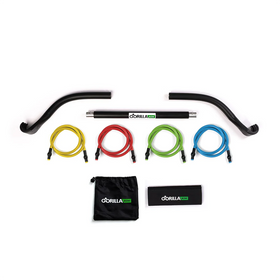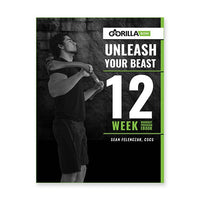Feeling Sore? Here Are 5 Ways Stretching Can Help

Whether you’re an athlete or are exercising for the first time, post-workout soreness can feel uncomfortable. Suddenly, getting out of bed is more challenging than it was just a day or two ago.
The soreness is only temporary, and there are ways to mitigate it. Stretching is one of the best methods for healing your body. When should you stretch? How does it help your body? Here’s why stretching should be a part of your exercise regimen.
How Should You Stretch?
Some say you should stretch before a workout, but others say wait until after. In gym class, your teacher likely instructed you and your classmates to do a series of stretches before the day’s activities. Who’s correct? It depends on the type of stretches you’re doing and the exercise performed after.
If your muscles are healthy, static stretching likely won’t benefit you. This method requires your body to be stationary while you stretch individual muscles. Instead, researchers say warming up with dynamic movements is better for your body. For example, you could do high knees, squats and lunges to prepare your body for exercise.
If you’re going for a run, start walking for five or 10 minutes. Then pick up the pace into a brisk walk or jog. The warmup will help your heart and muscles as you ease into more challenging parts of the workout and increase demand on your body.
How Does Stretching Help the Body?
Recovery is an essential part of fitness. Stretching is a practical way to help your body deal with soreness, whether you prefer dynamic or static. It also helps with other bodily functions, including these five benefits.
1. Increasing Blood Flow
One of the primary ways stretching helps your body is by increasing blood flow. Extending muscles opens the fibers. Thus, you’re letting an increased amount of oxygen and blood flow through to the tissues, which aids your muscles by removing waste, such as carbon dioxide (CO2) and lactic acid. After eliminating those substances, your body recovers faster and mitigates the soreness.
Increased blood flow is good for your body. Stretching contributes to better circulation, which builds better health. It also keeps your brain sharp, heals cuts and bruises faster, and improves your heart health. Your circulation is also critical because it helps your immune health, which is helpful during times like pandemics or influenza seasons.
2. Extending Range of Motion
Athletes need to have a full range of motion. Whether you’re doing your best Hakeem Olajuwon or Jerry Rice impression, it helps to increase your mobility for peak performance. The freedom to dictate your movement makes you feel more in control when you work out. Regular stretching maintains your flexibility and keeps your muscles healthy and strong. Your muscles can become tight without it.
Dynamic stretches are ideal for warming up, but static stretching is practical if you aim to extend your range of motion. You can do various kinds, but athletes may overlook some of them. For example, try the biceps stretch. This static stretch starts by putting your hands behind your back and raising them. Extending your range of motion allows your joints to move easily and to their full potential.
3. Reducing Pain
The next-day soreness feels rewarding or painful, depending on how strenuous the previous day’s workout was. Luckily, you can use stretching to reduce pain and relieve your muscles. Moving sore body parts feels good because you’ve stimulated the parasympathetic nervous system and blood flow.
Stretching is an excellent way to mitigate pain and soreness. However, you should proceed with caution and take it easy. Don’t force your muscles into any positions that are too painful or difficult.
Another benefit of stretching is it can reduce chronic pain. Some athletes deal with inflammation in particular areas. Regular stretching can reduce the intensity of the discomfort and alleviate stress on your body.
4. Improving Posture
One benefit of stretching you may overlook is your posture. You may sit in a chair at school or work when you're not on the court or field. Posture is essential because it conveys confidence, poise and respect. Sitting up straight often leads to a more positive mood, whereas slouching can communicate fatigue. Medically, a proper position is essential for your health by improving blood flow and supporting your muscles, whether sitting or standing.
Improving your posture lowers the chance you’ll experience neck and back pain. Stretching works for many different muscle groups and makes good posture feel more natural. One stretch that helps is the forward fold. Stand up straight, bend your torso and grab your ankles. This move stretches your legs and releases tension in your spine, leading to better posture.
5. Helping Mental Health
Another overlooked benefit of stretching is how it helps your mental health. It provides relief no matter how, where or when you do it. Your blood doesn’t flow as well when you’re stressed, and you may experience knots in your shoulders and neck. Stretching alleviates these symptoms of stress by reducing muscle tension.
Stretching decreases bad feelings and boosts your mood. Research shows that it enhances your body’s serotonin levels. Serotonin is essential for your brain because it makes you feel accomplished and more positive. It also lowers levels of depression.
What Stretches Are Best Pre-Workout?
You feel ready to take on the world before working out, but it may be wise to get warmed up first. Your stretches will likely depend on your regimen. These three are ideal for the work that lies ahead:
- Quad stretch: Quad stretches are an excellent way to get warmed up. A few rounds of these will result in increased blood flow and a wider range of motion. There are multiple ways to do quad stretches, but it’s easiest to do standing up. Start by standing on one leg and grabbing the opposite ankle. Bring your heel up to your glutes and hold the pose for at least 10 seconds. Hold onto something if you don’t feel comfortable with your balance.
- Lunges: Lunges are a practical way to prepare your body for lower-body workouts. They may be a warmup stretch, but you’re activating multiple muscles in your hips, glutes, calves, hamstrings and more. Start with the forward version. Stand up straight with your feet parallel to your hips. Step forward with one foot and bend both knees together, creating a 90-degree angle with the extended leg. The other knee should almost touch the ground. Keep your back straight and alternate legs.
- High knees: Did your PE coach make your class do high knees in grade school? Did anybody ever get their knees high enough to satisfy the coach? This can be a challenging warmup, but it’s worth it, especially if your workout involves running. This exercise is relatively simple. Raise your knees high enough to where they almost reach your chest, being sure to keep your back straight and maintain good posture. If it helps, keep your arms tightly by your side and bend your elbows.
How Can You Stretch After Exercise?
After your workout, you may feel like lying on the floor and doing nothing. However, stretching can significantly help your cooldown. Even five minutes of gentle stretching helps mitigate the next-day soreness. You won’t eliminate it, but you’ll feel better. Try some of these stretches post-workout:
-
Hamstring stretch: Hamstring stretches are a terrific way to cool down after running. You can alleviate any tight muscles or lower back pain. Start by lying on your back and raising your left leg. Use both hands to hold your hamstring and pull your leg toward your body. Hold the pose for 10 to 15 seconds, then switch to the right leg.
-
Child pose: If you like yoga, you may be familiar with the child pose. Others call it the balasana pose because of its Sanskrit origins. It’s an excellent post-workout stretch because it relaxes your brain and back while decompressing your spine and hips. Start by kneeling on the floor with your glutes resting on your heels. Lower your torso, stretch your arms forward and relax your shoulders. Hold this pose for 15 seconds or longer if needed.
- Butterfly pose: Stick with the yoga theme and do the butterfly pose, another effective stretch to do post-workout. This move is famous because it works your body’s adductor muscles and opens your thighs. It’s an excellent cooldown stretch to relieve tightness in your groin or lower back. Sit on the ground with your back straightened and feet touching. Hold this pose for two minutes.
Stretching Your Body’s Limits
Exercise is essential to human health. Whether you run, swim, play sports or go on long hikes, your body rewards you for working out and maintaining a healthy lifestyle. The next day can bring soreness, but you can alleviate discomfort by stretching your muscles before and after working out. This way, you’ll get the full benefits of staying fit and limber, including improved performance, better mental health and a greater range of motion. It’s a great way to up your game.










Leave a comment